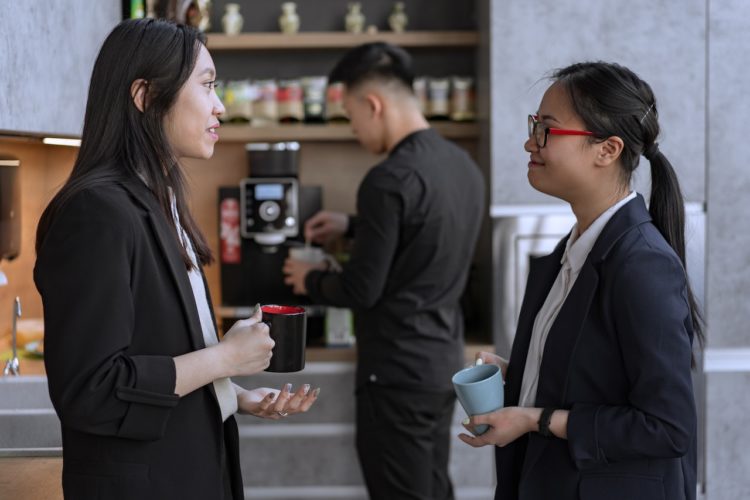The Southeast Asian retail industry continues to evolve as digital transformations across the region accelerate. A digital-first approach to business has become the new reality for retail driven by high levels of digital maturity and the rise of e-commerce.

The latter is nearing full adoption, at (94%) among digital users. These changes in consumer behaviour demand significant shifts in retail strategies. Today, a strong focus on deepening engagement with existing customers is as crucial to business survival as attracting new ones.
The changing face of Southeast Asia retail
The modern consumer demands instant, personalised, proactive, and consistent experiences above all else – challenging every customer-facing team to rethink traditional approaches.
Customer experience (CX) is proving to be the next serious battlefield for brands in 2023 and beyond, with many industries seeing higher growth by proactively making their customers happier, rather than trying to reactively placate unhappy customers.
For example, research by Forrester found that auto manufacturers stand to gain more than US$1 billion in additional revenue with an improvement in CX.
In the pursuit of providing improved CX capabilities, we’ll see brands leveraging an increasing number of digital channels and incorporating conversational artificial intelligence (AI) tools, such as chatbots and voice assistants. The importance of digital channels and communications with customers will lay the foundation for the continued growth of social and conversational commerce.
Rise of social and conversational commerce
Conversational commerce is the fusion of e-commerce, customer conversations, and the intent to create a seamless customer purchasing experience. In short, it is the intersection of messaging apps and shopping. It has become mission-critical for today’s digital-first businesses.
As conversational commerce registers significant growth across the region, social experiences were estimated to have directly influenced a huge proportion of e-commerce sales in Southeast Asia, amounting to about US$42 billion, by the end of 2022.
AMeta and BCG study found that business messaging has become the baseline expectation, with 65% of Southeast Asian consumers preferring interaction with businesses via chat instead of email or phone.
Besides e-commerce channels, conversational commerce indirectly contributes US$200B to online-to-offline transactions, solidifying its relevance and dominance in today’s retail landscape. This suggests customers often begin their journey with conversations with store staff on social platforms, such as over WhatsApp, asking for recommendations or general inquiries, before completing their purchases in a brick-and-mortar store.
How conversational commerce work
As brands strive to leverage the latest technology to provide a seamless, personalised experience, conversational commerce is increasingly becoming the gateway – or enabler – to great customer service.
When implemented correctly, conversational commerce shows significant promise in bridging the gap between customers and brands. It creates an avenue for retailers to be present throughout the customer journey – from product discovery to purchase, and finally, post-purchase brand advocacy.
The use of live chats, messaging apps, chatbots, and voice assistants, creates opportunities for more engaging, one-on-one interactions that allow for quicker purchases while reducing the sales cycle.
Other benefits arising from a more engaged customer include reduced cart abandonment, opportunities to upsell and cross-sell, improved sale velocity, and most important, increased brand loyalty with more satisfied customers.
Enhancing conversational commerce with AI
AI will continue to play a major role in shaping and enhancing how businesses across industry sectors worldwide operate and achieve maximum efficiency. The most powerful conversational commerce platforms are those that can create an end-to-end customer experience spanning all channels and touchpoints – and this relies on a business’s ability to harness technology to deliver, through conversational commerce, impactful experiences with seamless, highly personalised interactions.
AI models today can interpret huge volumes of unstructured customer data across multiple channels and touchpoints within the organisation. By analysing such data, brands can provide not only the right recommendations to customers before they head to checkout but also act on insights quickly to better shape their communications, potentially providing limitless value across enterprises.
However, as every brand is unique and AI solutions aren’t created equal, for a business to reap the true benefits and obtain the best results, custom AI models specifically configured to the business are required.
The retail of the future
While the e-commerce market in Southeast Asia has seen a massive rise, the region’s continuing digital transformation creates considerable room for continued growth, especially as customers broaden their range of digital purchases across channels and categories.
Organisations with the right tools and platforms in place, such as AI-augmented conversational commerce capabilities, will do well to leverage powerful and actionable insights and analytics to meet customer needs, expectations and preferences, gaining a competitive advantage in an increasingly digital retail landscape.
Luxury brands such as Dior and Louis Vuitton, which have been using messaging apps for years, now have their eyes set on embedding that messaging experience into their primary user journeys – whereas social micro-sellers, who were among the first to offer instant text-based purchases, are using easy-to-use plugin tools to offer e-commerce through messaging apps to enable them to engage digital-first consumers in a meaningful way.
As AI becomes more sophisticated, it will slowly shift from being deemed as a ‘luxury’ to a “business imperative”. Organisations will increasingly understand and embrace unified customer experience management (CXM) as the new competitive differentiator in today’s digital economy.
The future of conversational commerce is bright, and we are just at the start of something new and important – not just in the retail sector, but across the broader business landscape.





